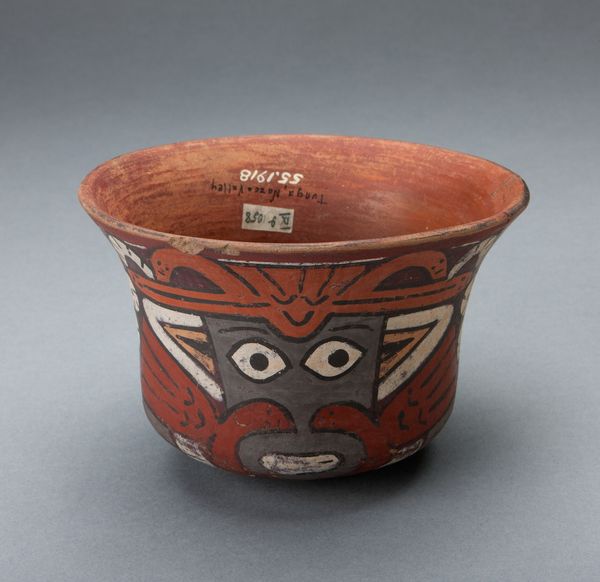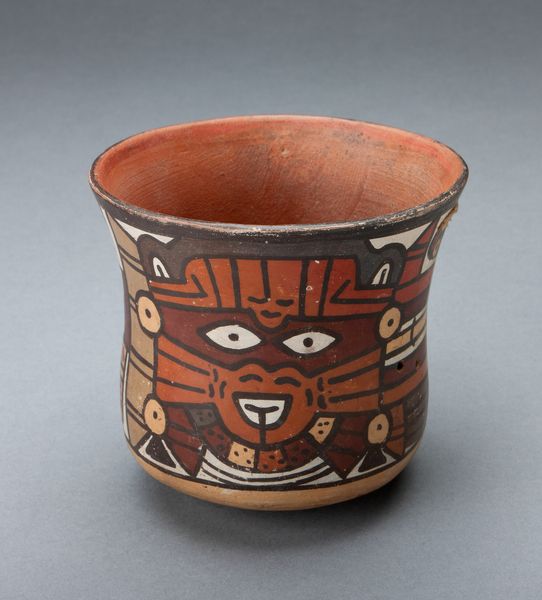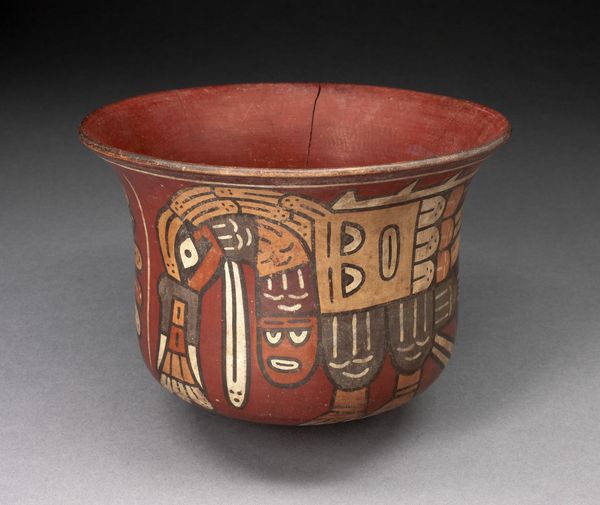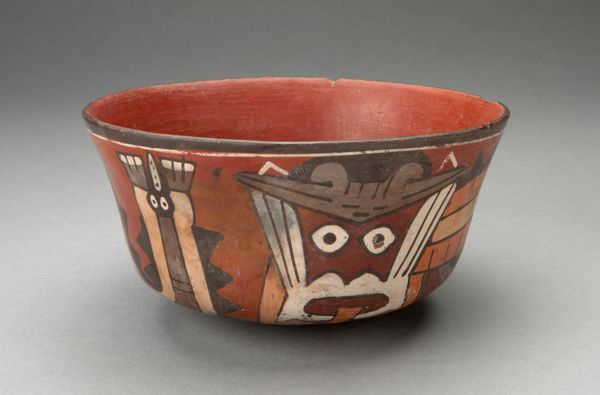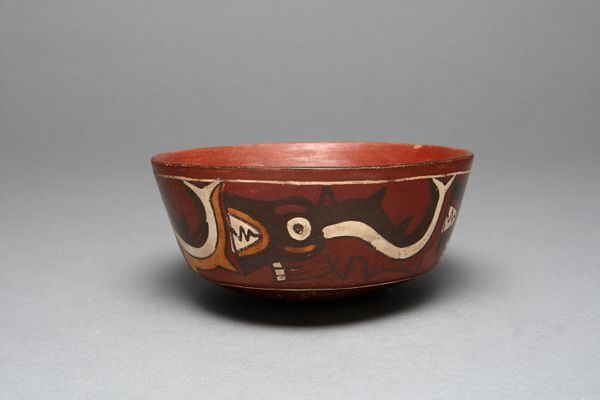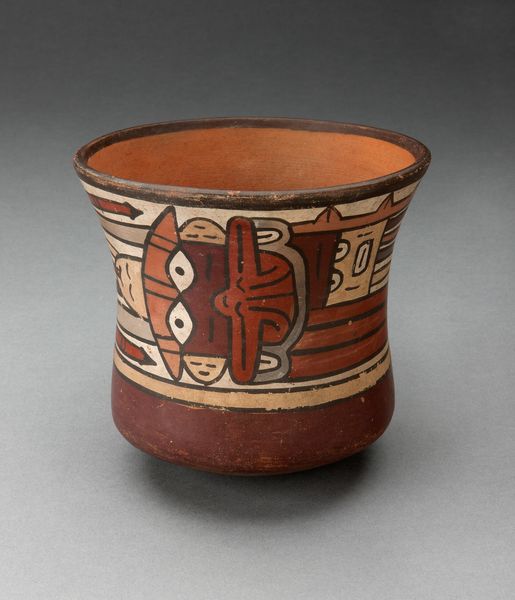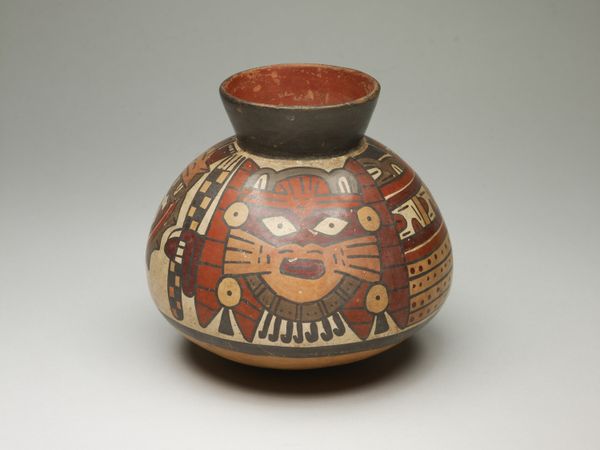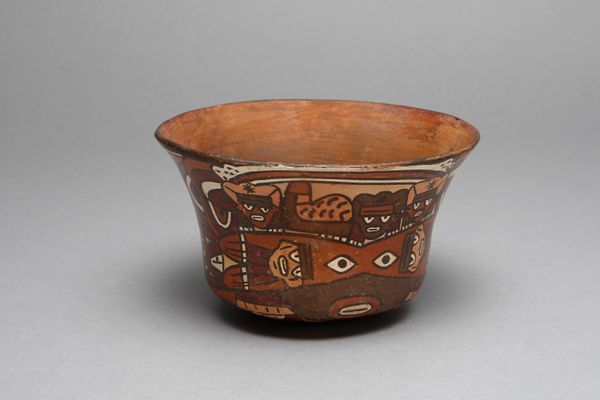
Cup Depicting a Ritual Perfomer Wearing a Feline Mask c. 180 - 500
0:00
0:00
ceramic
#
pottery
#
ceramic
#
figuration
#
ceramic
#
indigenous-americas
Dimensions: 8.6 × 12.2 cm (3 3/8 × 4 13/16 in.)
Copyright: Public Domain
Curator: Here we have a ceramic cup created by the Nazca people, sometime between 180 and 500 AD, depicting a ritual performer wearing a feline mask. Editor: Wow, that is quite a striking piece. I feel immediately drawn in by the boldness of the design. Those wide eyes staring out seem to possess secrets from another time. Curator: Indeed. Consider the labour invested in creating such a refined piece of pottery in that period. The materials available, the firing techniques… this wasn’t just any cup. Editor: Not at all! It feels profoundly ceremonial. Perhaps a vessel for libations, connecting the earthly with the spiritual realms through ritual performance? I can almost hear the chanting. Curator: Precisely! And notice the craftsmanship; the controlled lines of the painted decoration, the smooth surface, these hint at a sophisticated system of knowledge regarding ceramic production. It suggests a society with surplus and specialized labour. Editor: That feline mask has so much presence, doesn't it? It reminds me a little bit of something I've dreamt – a guardian, fierce yet benign, protecting some hidden knowledge or ancient practice. The imagery is both familiar and alien. Curator: It underscores the relationship between the community, performance and nature, and probably consumption in a religious sphere, which emphasizes not only a system of labor and beliefs, but their social integration. Editor: And in something as commonplace as a cup! This elevates daily life into the mythic. This isn't just about craft; it's about imbuing the mundane with symbolic power. Curator: Exactly, this little piece is representative of labor and a system of aesthetic beliefs, but also shows the means and materials they had access to during its production. Editor: Gazing at this cup stirs something primal in me— a connection to ancestors and stories whispered across centuries. Curator: Thinking about how it was made gives me an added appreciation for not just what is shows us on its surface, but for how many other dimensions it can also represent and unveil about the context of its origins.
Comments
No comments
Be the first to comment and join the conversation on the ultimate creative platform.

